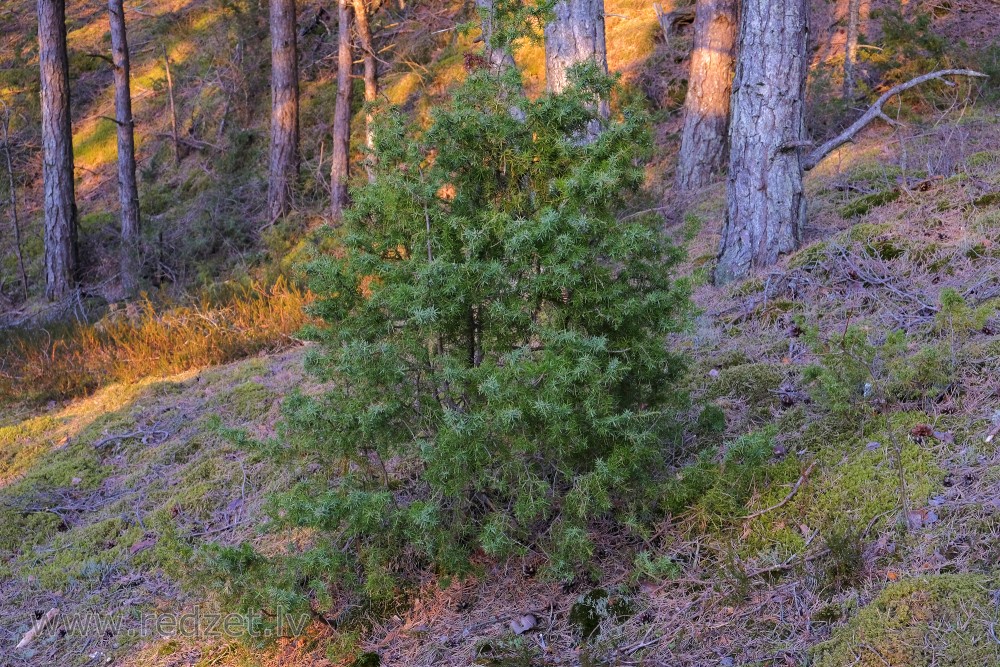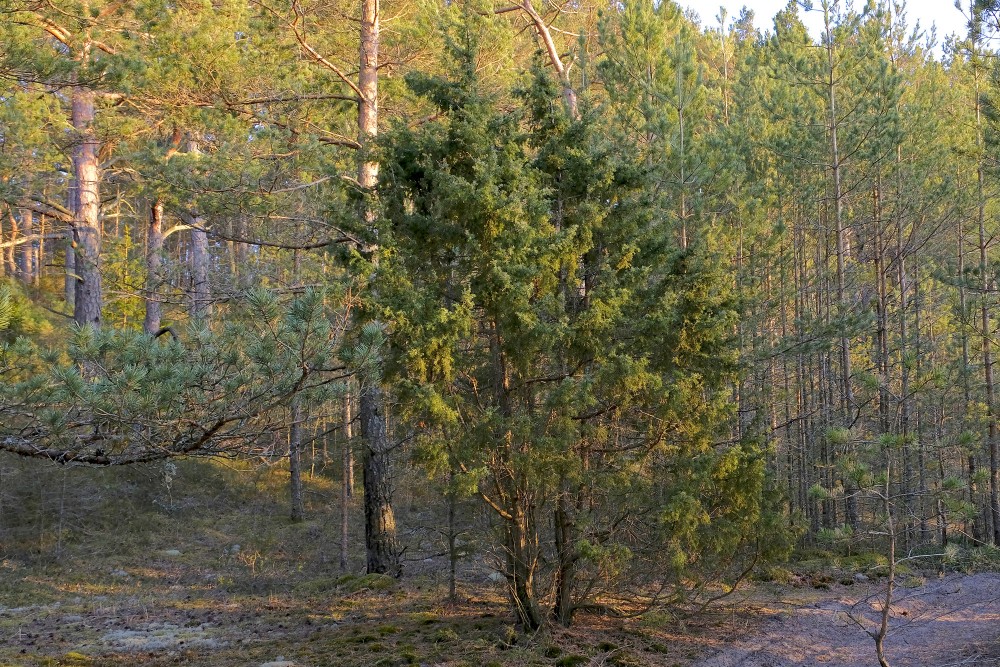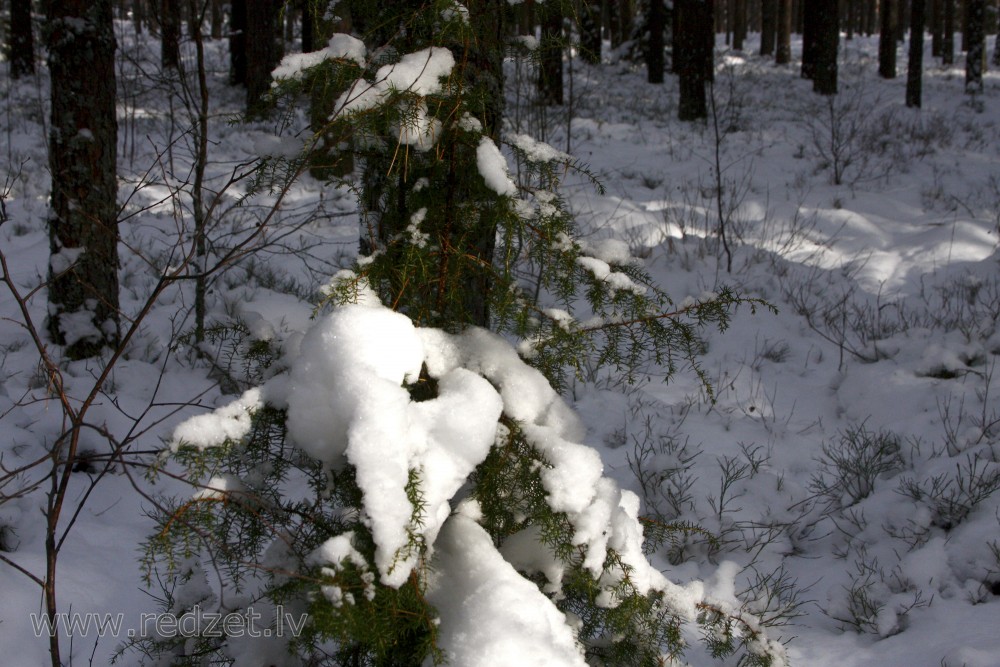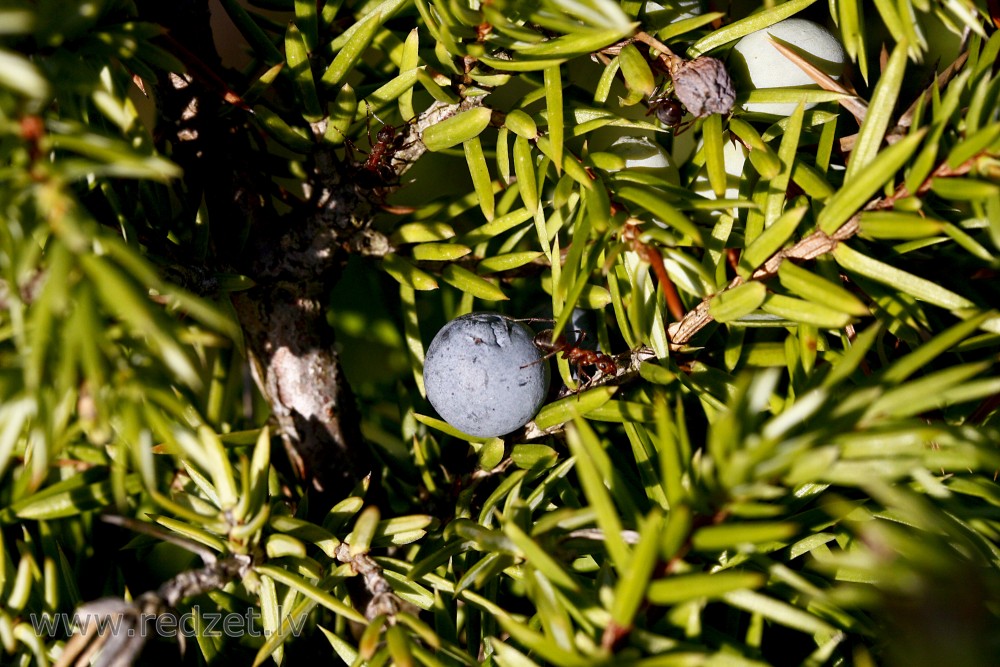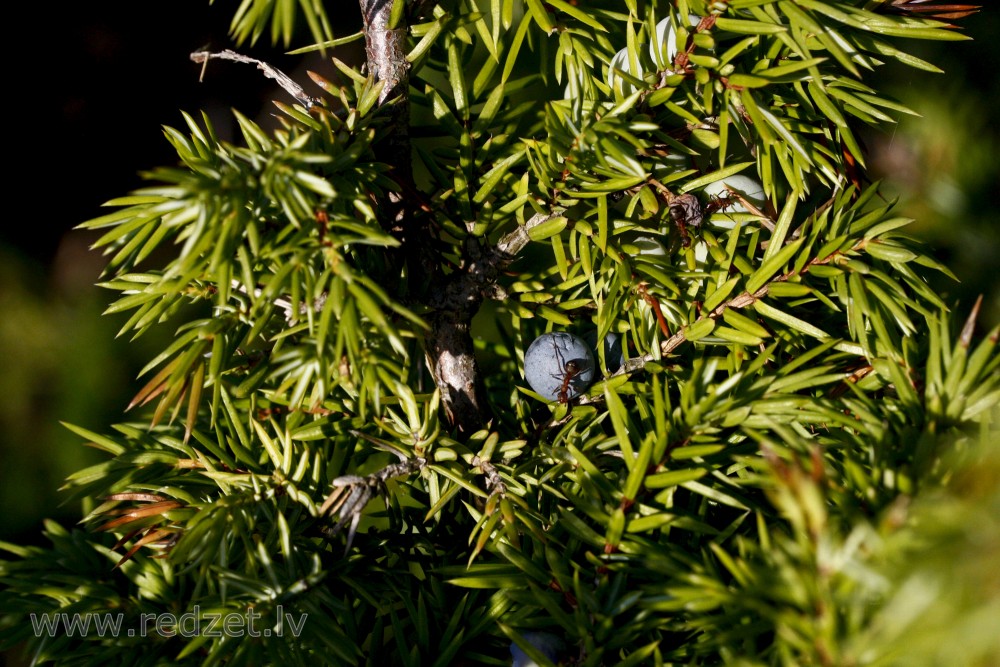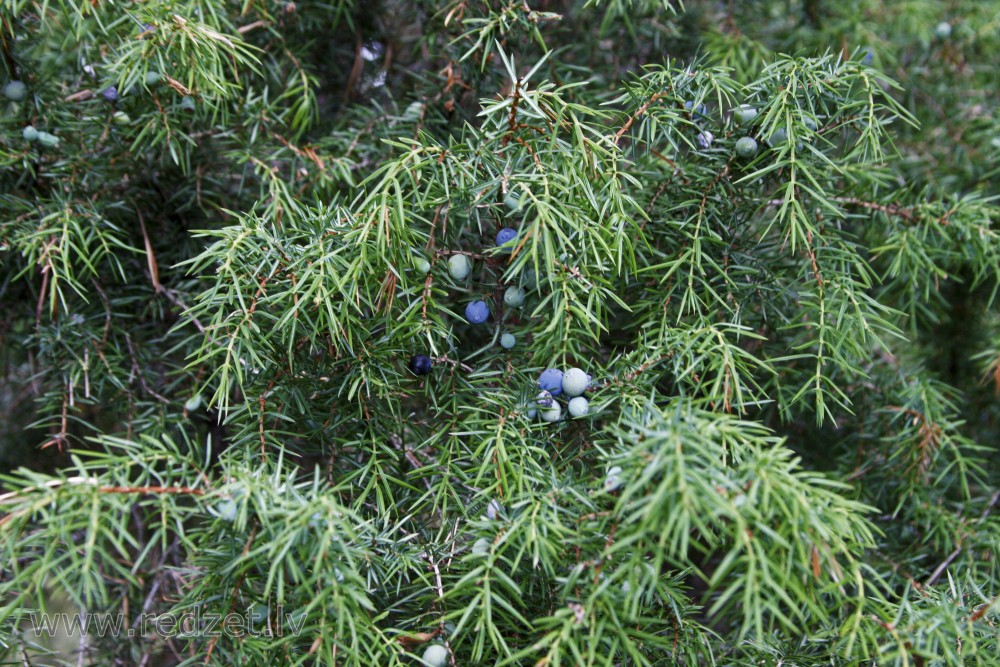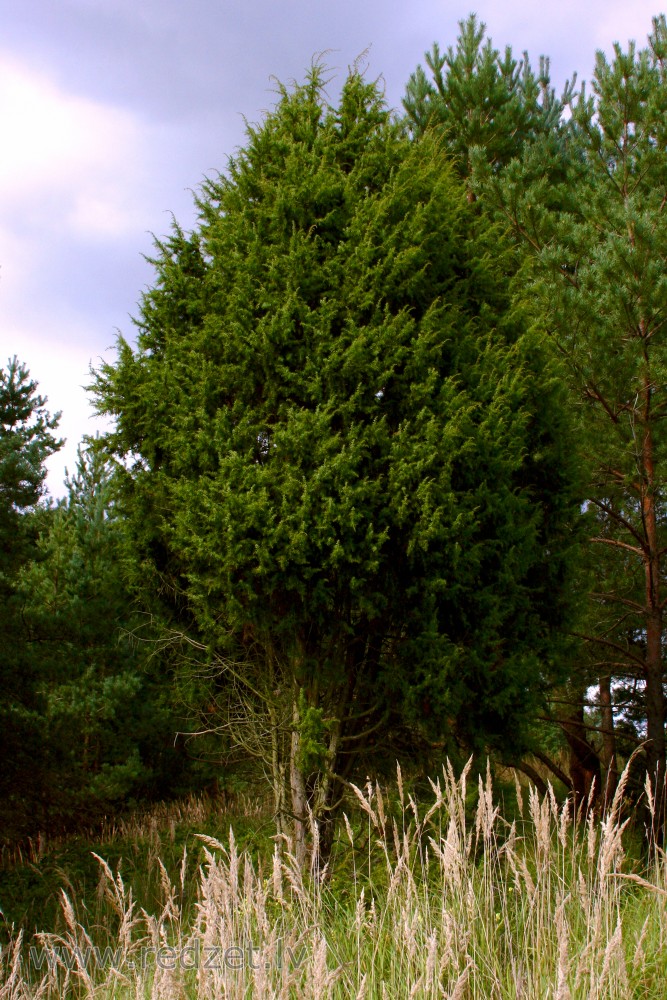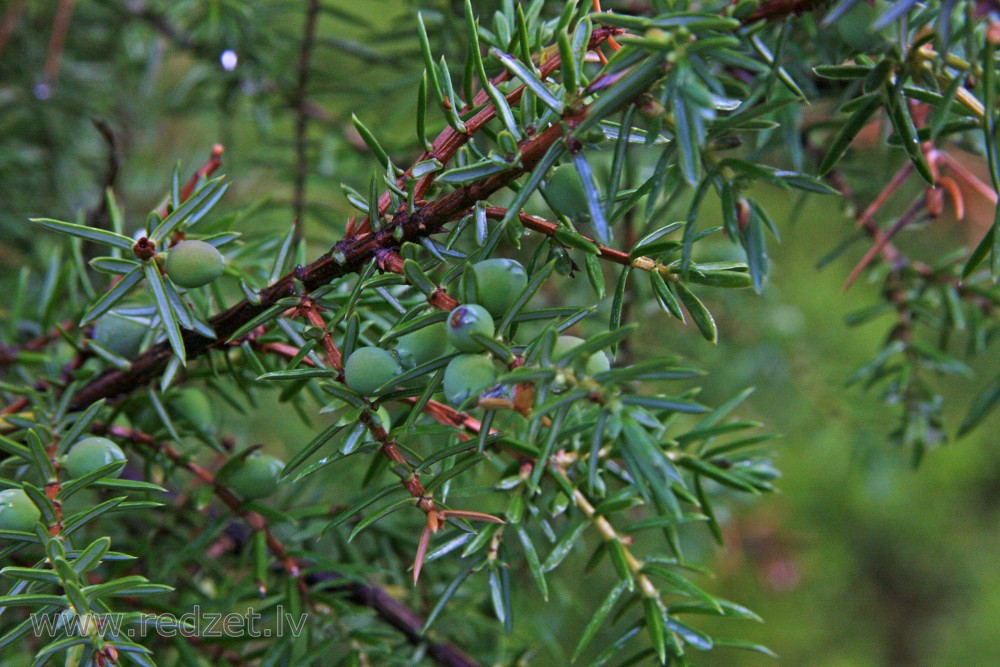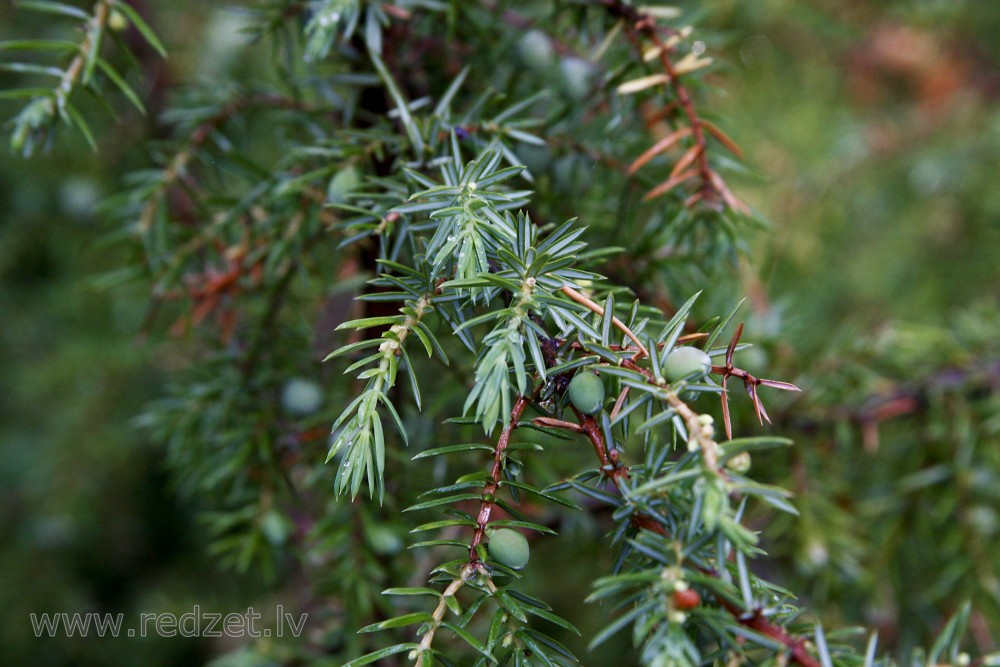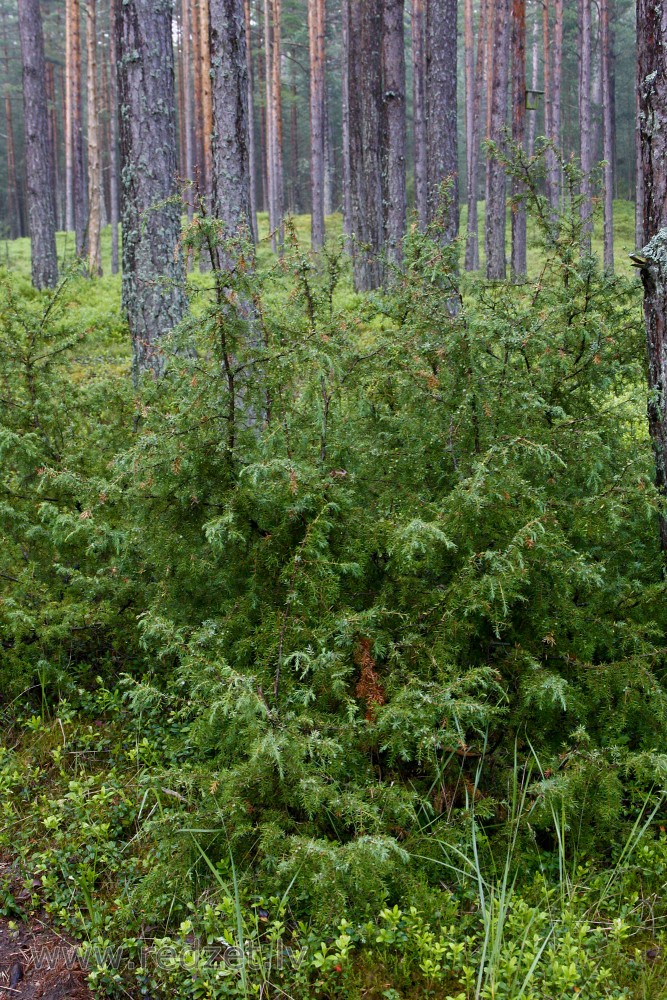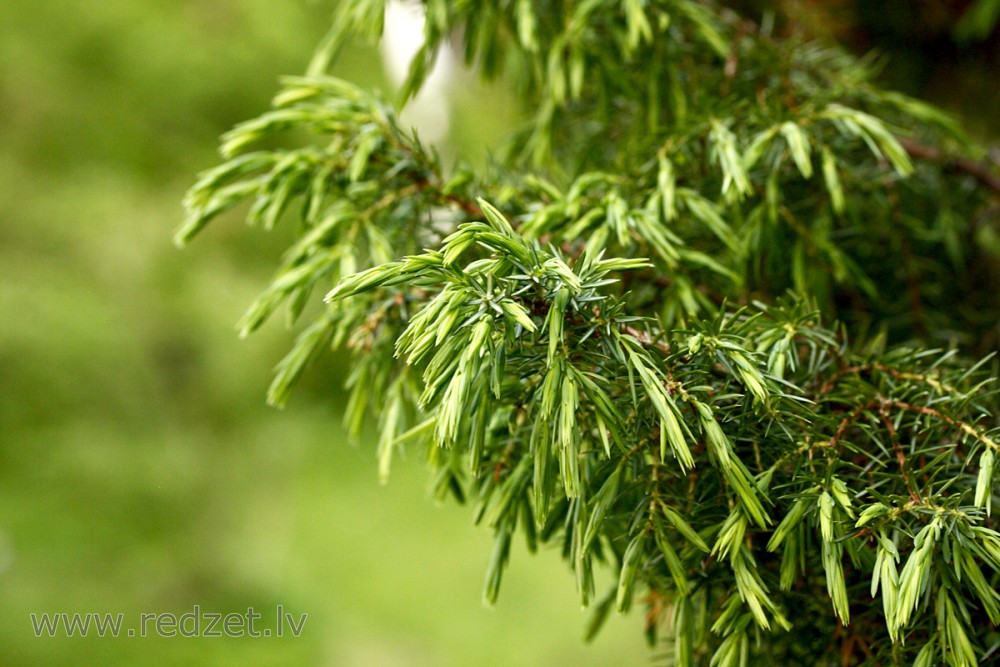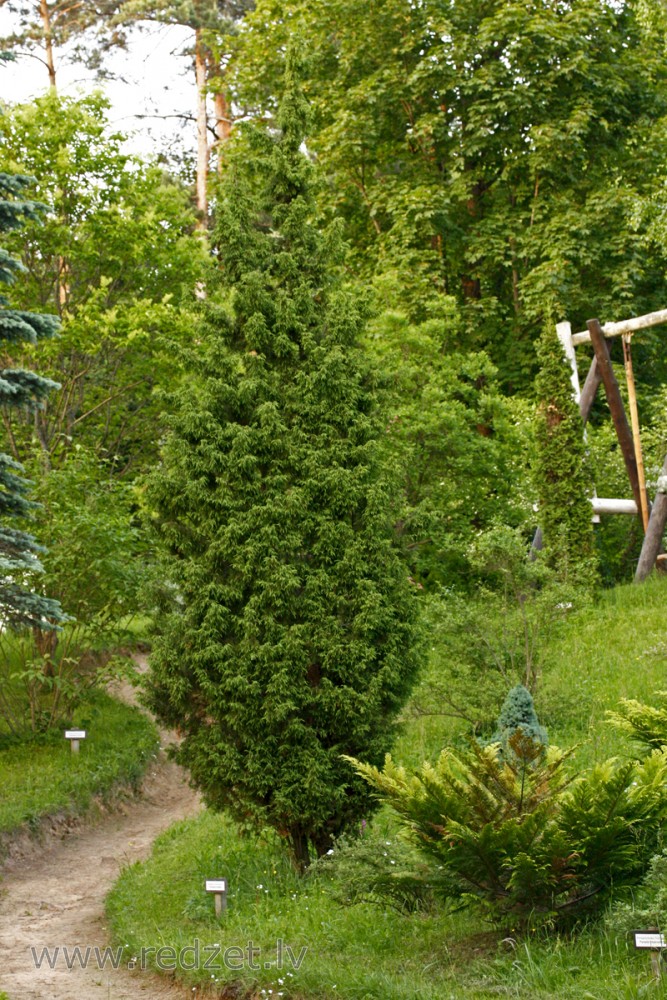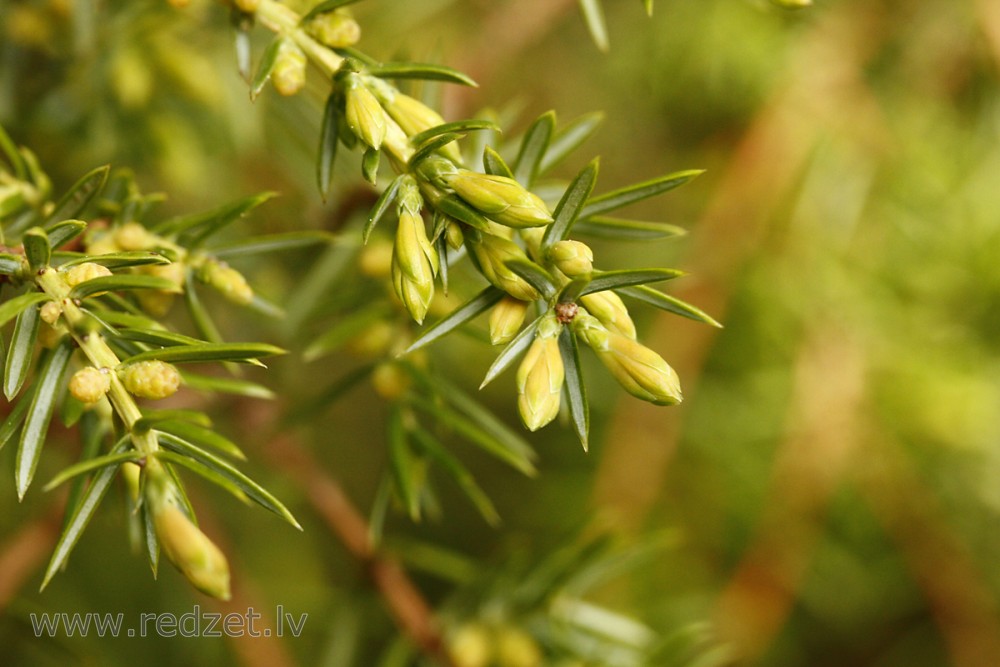Juniper
Junipers are coniferous plants in the genus Juniperus /dʒuːˈnɪpərəs/ of the cypress family Cupressaceae. Depending on taxonomic viewpoint, between 50 and 67 species of junipers are widely distributed throughout the Northern Hemisphere, from the Arctic, south to tropical Africa, from Ziarat, Pakistan, east to eastern Tibet in the Old World, and in the mountains of Central America. The highest-known juniper forest occurs at an altitude of 16,000 ft (4,900 m) in southeastern Tibet and the northern Himalayas, creating one of the highest tree-lines on earth.
| Juniper | |
| Kingdom: | Plantae |
| Division: | Pinophyta |
| Class: | Pinopsida |
| Order: | Pinales |
| Family: | Cupressaceae |
| Subfamily: | Cupressoideae |
| Genus: | Juniperus |
Description
Junipers vary in size and shape from tall trees, 20–40 m (66–131 ft) tall, to columnar or low-spreading shrubs with long, trailing branches. They are evergreen with needle-like and/or scale-like leaves. They can be either monoecious or dioecious. The female seed cones are very distinctive, with fleshy, fruit-like coalescing scales which fuse together to form a "berry"-like structure, 4–27 mm (0.16–1.06 in) long, with one to 12 unwinged, hard-shelled seeds. In some species, these "berries" are red-brown or orange, but in most they are blue; they are often aromatic and can be used as a spice. The seed maturation time varies between species from 6 to 18 months after pollination. The male cones are similar to those of other Cupressaceae, with six to 20 scales.
In zones 7 through 10, junipers can bloom and release pollen several times each year. A few species of junipers bloom in autumn, while most species pollinate from early winter until late spring.
Many junipers (e.g. J. chinensis, J. virginiana) have two types of leaves; seedlings and some twigs of older trees have needle-like leaves 5–25 mm (0.20–0.98 in) long, and the leaves on mature plants are (mostly) tiny (2–4 mm (0.079–0.157 in)), overlapping, and scale-like. When juvenile foliage occurs on mature plants, it is most often found on shaded shoots, with adult foliage in full sunlight. Leaves on fast-growing 'whip' shoots are often intermediate between juvenile and adult.
In some species (e. g. J. communis, J. squamata), all the foliage is of the juvenile needle-like type, with no scale leaves. In some of these (e.g. J. communis), the needles are jointed at the base, in others (e.g. J. squamata), the needles merge smoothly with the stem, not jointed.
The needle-leaves of junipers are hard and sharp, making the juvenile foliage very prickly to handle. This can be a valuable identification feature in seedlings, as the otherwise very similar juvenile foliage of cypresses (Cupressus, Chamaecyparis) and other related genera is soft and not prickly.
Juniper is the exclusive food plant of the larvae of some Lepidoptera species, including Bucculatrix inusitata and juniper carpet, and is also eaten by the larvae of other Lepidoptera species such as Chionodes electella, Chionodes viduella, juniper pug, and pine beauty; those of the tortrix moth C. duplicana feed on the bark around injuries or canker.
Junipers are gymnosperms, which means they have seeds, but no flowers or fruits. Depending on the species, the seeds they produce take 1–3 years to develop. The impermeable coat of the seed keeps water from getting in and protects the embryo when being dispersed. It can also result in a long dormancy that is usually broken by physically damaging the seed coat. Dispersal can occur from being swallowed whole by frugivores and mammals. The resistance of the seed coat allows it to be passed down through the digestive system and out without being destroyed along the way. These seeds last a long time, as they can be dispersed long distances over the course of a few years.
Ecology
Juniper plants thrive in a variety of environments. The junipers from Lahaul valley can be found in dry, rocky locations planted in stony soils. These plants are being rapidly used up by grazing animals and the villagers. There are several important features of the leaves and wood of this plant that cause villagers to cut down these trees and make use of them. Additionally, the western juniper plants, a particular species in the juniper genus, are found in woodlands where there are large, open spaces. Junipers are known to encompass open areas so that they have more exposure to rainfall. Decreases in fires and a lack of livestock grazing are the two major causes of western juniper takeover. This invasion of junipers is driving changes in the environment. For instance, the ecosystem for other species previously living in the environment and farm animals has been compromised. When junipers increase in population, there is a noticeable decrease in woody species like mountain big sagebrush and aspen. Among the juniper trees themselves, there is a lot of competition. The cost of this is a decrease in berry production. The herbaceous cover has decreased and oftentimes junipers are mistaken to be weeds. As a result, several farmers have thinned the juniper trees or removed them completely. However, this reduction did not result in any significant difference on wildlife survival. Some small mammals found it advantageous to have thinner juniper trees, while cutting down the entire tree was not favorable.
en.wikipedia.org
